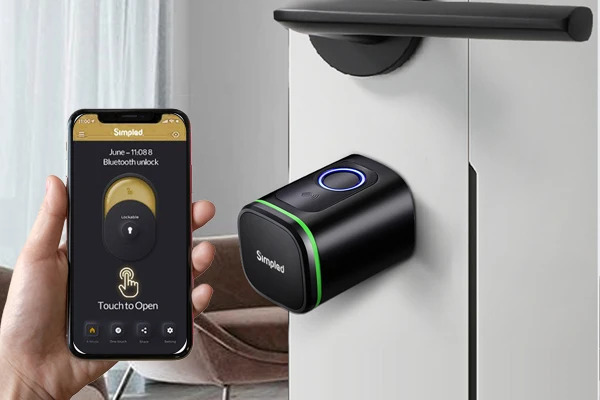I’ve always been fascinated by the ease of tapping my phone to unlock it, a little magic that makes my day smoother. As someone who loves exploring how tech simplifies life, Touch to Unlock technology has caught my eye, especially in 2025 when biometric security is everywhere. Whether you’re unlocking your phone, laptop, or even a smart lock, this innovation feels like the future right in my hands. In this guide, I’ll break down what it is, how it operates, its common uses, security aspects, pros and cons, and tips to maximize it. Join me as we uncover the science and practicality behind touch to unlock!
Introduction
There’s nothing quite like the satisfying click of my phone unlocking with a single touch—no passwords, no hassle. That’s the beauty of touch to unlock technology, and it’s become a staple in my tech routine. In 2025, with smart devices dominating our lives, this feature is more relevant than ever, from phones to home security systems. I’ve chatted with friends about how it saves time, and I’m eager to dig into the details. This guide will explore its mechanics, everyday applications, security strengths, trade-offs, and ways to get the best out of it. Whether you’re a tech newbie or a gadget geek like me, there’s something here to enhance your experience—let’s get started!
What Is Touch to Unlock Technology?
Touch to unlock technology is a biometric system that lets you access devices or spaces by recognizing your unique touch, usually via fingerprints. To me, it’s like a personal key I carry on my fingertips, built into gadgets like smartphones, laptops, and smart locks. It uses sensors to scan and match my fingerprint pattern against a stored template, skipping the need for PINs or passwords. I first noticed it on my phone years ago, and now it’s evolved with advanced sensors in devices like the latest iPhones or Androids. It’s a blend of convenience and security, making it a go-to feature for anyone like me who values quick access.
How Does Touch to Unlock Work?
The way touch to unlock works is a clever mix of science and engineering that I find impressive. It starts with a sensor—often capacitive or ultrasonic—capturing the ridges and valleys of my fingerprint when I place my finger on it. The sensor converts this into a digital map, which my device compares to a pre-saved profile stored securely in its memory. I’ve learned that capacitive sensors detect electrical charges from my skin, while ultrasonic ones use sound waves for a deeper scan, even through dirt. If the match is close enough, the device unlocks in a flash—usually under a second for me. It’s this speed and accuracy that make it feel seamless.
Common Uses of Touch to Unlock
The common uses of touch to unlock are popping up all around me, and they’re incredibly practical. On my smartphone, it’s my daily shortcut to apps and settings, saving me from typing codes. Laptops like my MacBook use it to log me in with a quick touch, which I love during work marathons. Smart locks on doors—I’ve seen them at a friend’s house—let me enter with a tap, ditching keys. Even payment systems, like Apple Pay, rely on it for secure transactions, which I’ve used at stores. These applications show how touch to unlock blends into my life, making tech feel intuitive and secure.
Security Features of Touch to Unlock
The security features of touch to unlock are what give me peace of mind, and they’re robust. My fingerprint data is encrypted and stored locally, not on some cloud server, reducing hacking risks. Devices often limit attempts—after five fails on my phone, it demands a passcode, a safeguard I appreciate. Some systems, like those with ultrasonic sensors, detect “liveness” to prevent spoofing with fake prints, a trick I’ve read about in security blogs. I also like how it pairs with other checks, like facial recognition, for extra layers. It’s this blend of tech and caution that keeps my data safe.
Pros and Cons of Touch to Unlock
Weighing the pros and cons of touch to unlock helps me decide when to rely on it. The pros are huge—speedy access saves me time, and the convenience of no passwords is a daily win. I love how secure it feels with biometric precision. But there are cons: if my fingers are dirty or wet, it struggles—happened to me after gardening! It can also be bypassed with advanced spoofing, though rare, which worries me a bit. Plus, older devices might not support it well. For me, the benefits outweigh the downsides with proper care, making it a solid choice.
Tips to Maximize Touch to Unlock Performance
My tips to maximize touch-to-unlock performance come from trial and error, and they’ve smoothed out my experience. Keep your fingers clean and dry—after a messy meal, I wiped mine and it worked better. Register multiple fingers in the settings for flexibility; I added my thumb and index for backup. Update your device software regularly—my phone’s latest update fixed a glitch. Avoid harsh pressure—light touches work best, as I learned after forcing it. If it fails, clean the sensor with a soft cloth. These tweaks keep my unlocks fast and reliable.
Conclusion
Touch-to-unlock technology is a game-changer in 2025, blending science with everyday convenience across devices. Understanding how it works, its uses, security, and trade-offs empowers me to use it wisely. With tips to optimize performance, it’s a tool I can’t imagine living without. Ready to unlock the potential? Try these suggestions, test your setup, and enjoy the seamless access—your tech future is at your fingertips!

